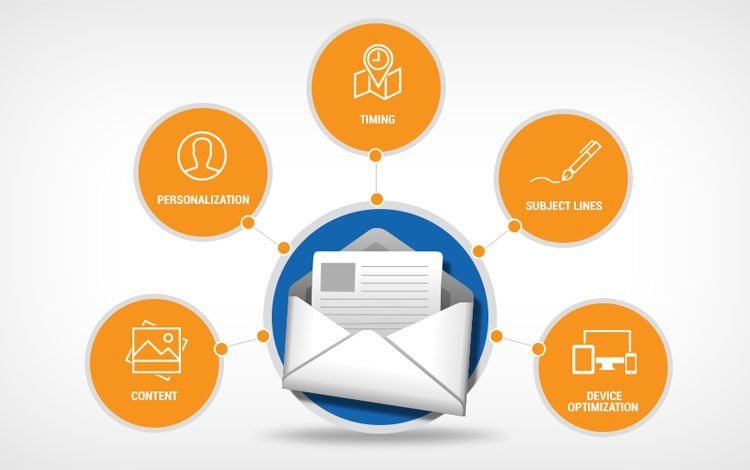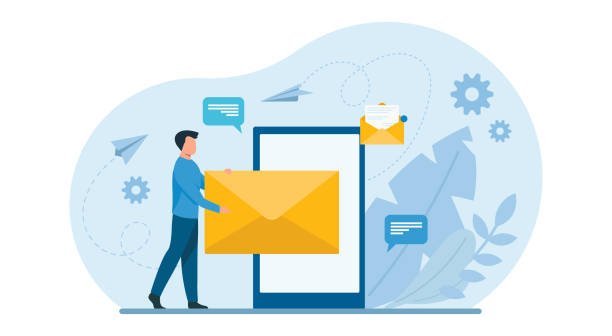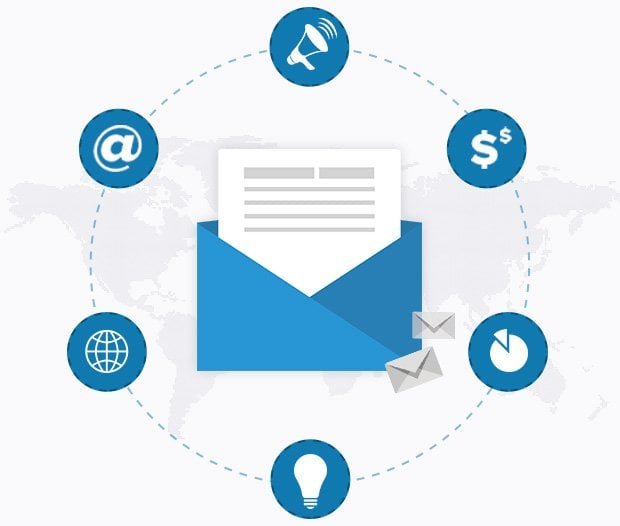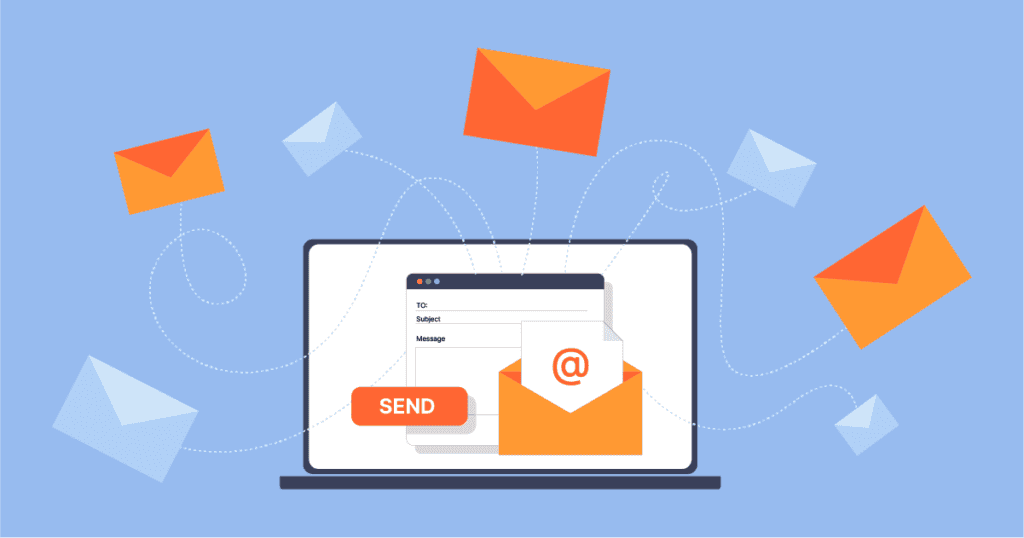Okay, let’s dive into the world of email marketing! You know it’s a powerhouse for growing your business and connecting with your audience. But are you getting the most out of your email campaigns? Are you tracking the right metrics and making data-driven decisions to boost your results? If not, don’t worry—this blog post is your ultimate guide to unlocking the secrets of email marketing success.
Dominate Your Metrics: The KPIs That Matter
First things first, we need to talk about metrics. You can’t improve what you don’t measure, right? In email marketing, there are a bunch of key performance indicators (KPIs) you need to keep an eye on, but let’s focus on the big ones:
Open Rate: The First Impression King
Your open rate is like the first impression of your email. It tells you the percentage of people who opened your email out of everyone you sent it to. A high open rate is a good sign—it means your subject lines are enticing enough to get people to click.
Tips to Skyrocket Your Open Rates
- Personalize subject lines: Use the recipient’s name or mention something relevant to their interests.
- Keep it short and sweet: People are busy, so get to the point quickly.
- Create a sense of urgency: Use words like “limited time” or “exclusive offer” to encourage people to open right away.
- A/B test your subject lines: Try out different variations to see what performs best.
Click-Through Rate (CTR): Measuring Engagement
The click-through rate tells you how many people clicked on a link in your email after opening it. It’s a measure of how engaging your email content is. A high CTR means people are finding your content valuable and are taking action.
Strategies to Maximize Your CTR
- Use clear and compelling calls to action: Tell people exactly what you want them to do and make it easy for them to do it.
- Make your emails visually appealing. Use images, graphics, and formatting to break up the text and make it more engaging.
- Segment your audience and send targeted emails: People are more likely to click on links if the content is relevant to their interests.
- Optimize for mobile devices: More and more people are checking email on their phones, so make sure your emails look good on smaller screens.
Conversion Rate: The Bottom Line
This is the big one! The conversion rate measures how many people completed a desired action after clicking on a link in your email. This could be anything from making a purchase to signing up for a webinar.
Tactics to Boost Your Conversion Rate
- Align your email content with your landing page: Make sure the message and offer are consistent to avoid confusing people.
- Use strong landing page copy and design: Once someone clicks through, you need to make sure your landing page is persuasive and easy to navigate.
- Offer a clear value proposition: Why should people take the action you want them to take? Make sure the benefits are clear.

Amplify Your Impact: Advanced Email Marketing Strategies
So you’ve got a handle on the basic metrics—great! But don’t stop there. To truly level up your email marketing game, you need to implement some advanced strategies.
Segmentation: Divide and Conquer
Segmentation is all about dividing your audience into smaller groups based on shared characteristics. This allows you to send more targeted and relevant emails, which can lead to higher engagement and conversions.
Segmentation Techniques to Try
- Demographics: Age, gender, location
- Behavior: Purchase history, website activity, email engagement
- Interests: Products or categories they’ve shown interest in
- Engagement level: How often they open and click on your emails
By segmenting your audience, you can tailor your messaging and offers to each group’s specific needs and interests.
Personalization: Make It All About Them
Personalization goes hand in hand with segmentation. It’s about using data to create more personalized experiences for your subscribers. This could include using their name in the subject line, recommending products based on their past purchases, or sending birthday emails with special offers.
Personalization Tactics That Convert
- Dynamic content: Show different content to different segments based on their data.
- Personalized recommendations: Suggest products or content based on their interests.
- Behavioral triggers: Send emails based on specific actions they take, like abandoning a cart or browsing a particular product category.
Personalization can make your emails feel more like a one-on-one conversation and less like a mass blast, which can lead to stronger relationships and increased loyalty.
Automation: Work Smarter, Not Harder
Email automation is a lifesaver when it comes to saving time and scaling your efforts. It allows you to set up automated email sequences that are triggered by specific actions or events.
Automation Workflows to Implement
- Welcome series: Introduce new subscribers to your brand and products.
- Abandoned cart emails: Recover lost sales by reminding people about the items they left behind.
- Post-purchase follow-ups: Thank customers for their purchase and offer additional products or support.
- Re-engagement campaigns: Win back inactive subscribers with targeted offers or content.
Automation takes care of the repetitive tasks, so you can focus on the strategic aspects of your email marketing.

Optimize for Success: Testing and Tweaking Your Way to the Top
The key to email marketing success is continuous improvement. You need to be constantly testing and tweaking your campaigns to see what works best for your audience.
A/B Testing: The Scientific Method of Email Marketing
A/B testing involves creating two versions of an email and sending them to different segments of your audience to see which one performs better. You can test anything from subject lines and calls to action to email design and content.
A/B Testing Ideas to Experiment With
- Subject lines: Test different word choices, lengths, and personalization tactics.
- Email content: Try different layouts, images, and copywriting styles.
- Calls to action: Experiment with different button colors, text, and placement.
- Sending times: See when your audience is most likely to open and engage with your emails.
By consistently A/B testing your campaigns, you can gather valuable data on what resonates with your audience and make data-driven decisions to improve your results.
Email Deliverability: Getting to the Inbox
What’s the point of crafting amazing emails if they never even make it to the inbox? Email deliverability is crucial, and it depends on a number of things, such as your sender reputation, email content, and list hygiene.
Tips to Improve Email Deliverability
- Use a reputable email service provider (ESP): A good ESP will have strong deliverability practices in place.
- Keep your list clean: Remove inactive subscribers and those who have consistently marked your emails as spam.
- Avoid spam triggers: Use a conversational tone, avoid excessive exclamation points and all caps, and personalize your emails.
- Authenticate your domain: This helps prove to email providers that you are a legitimate sender.
- Monitor your deliverability metrics: Keep an eye on your bounce rate, spam complaints, and unsubscribes.
By focusing on deliverability, you can ensure that your emails reach the people you’re trying to connect with.

Unlocking the Power of Email Challenges
Remember the example Alex Hormozi shared about the 7-Day Challenge email campaign? It generated $2.4 million in additional profit by tapping into the immense power of challenges as email marketing tools. This strategy involves creating a time-bound challenge designed to solve a specific problem for your audience and then promoting it heavily through your email list.
Why Challenges Work So Well
- They create a sense of urgency and excitement. People are more likely to take action when they have a deadline and a clear goal to achieve.
- They provide value upfront: By offering a solution to a problem, you build trust and goodwill with your audience.
- They nurture leads and move them closer to a purchase. By providing valuable content and guidance, you can warm up leads and make them more receptive to your offers.
- They can be repeated quarterly. By changing the name or theme of the challenge, you can offer the same core value while keeping things fresh.
- They allow for targeted messaging: You can tailor the challenge and email content to specific audience segments.
Consistently Convert: A Winning Email Strategy
Now that we’ve explored the core elements of tracking and improving email marketing results, let’s tie it all together. Here’s a winning email strategy you can implement:
- Set clear goals for your email marketing: What do you want to achieve? Increased brand awareness, more leads, higher sales?
- Build a high-quality email list: Attract subscribers who are genuinely interested in your brand and products.
- Segment your audience: Divide your list into smaller groups based on shared characteristics.
- Personalize your emails: Use data to create more relevant and engaging experiences for your subscribers.
- Automate your email sequences: Save time and scale your efforts with automated workflows.
- Test and optimize your campaigns: Use A/B testing to find out what works best for your audience.
- Focus on email deliverability: Make sure your emails are reaching the inbox.
- Leverage the power of challenges: Create engaging challenges that provide value and drive conversions.
- Track your results and make data-driven decisions: Use the insights you gather to continuously improve your email marketing strategy.
Conclusion
By following these tips, you can master the art of email marketing and achieve remarkable results for your business. Remember, it’s all about building relationships, providing value, and making data-driven decisions. Keep experimenting, keep learning, and watch your email marketing soar! Invest time in segmenting your audience to deliver personalized content that resonates with them. Leverage proven email marketing strategies for success to nurture leads and convert them into loyal customers. With persistence and creativity, you will see your engagement rates climb and your business thrive. Additionally, consider segmenting your audience to tailor your messages more effectively, ensuring that each subscriber receives content that resonates with them. Implementing strong email marketing strategies for success involves analyzing your campaign performance to continuously enhance your approach. Embrace automation tools to streamline your efforts, allowing you to focus on crafting compelling messages that drive engagement and conversions.
FAQs
How often should I send emails? There’s no one-size-fits-all answer, as it depends on your audience, industry, and goals. Start by emailing once or twice a week and tracking your engagement metrics. If your open and click-through rates start to decline, you might be emailing too often.
What’s the best time to send emails? Again, it depends! Experiment with different sending times and days to see what works best for your audience. A/B testing can help you pinpoint the optimal sending window.
How can I grow my email list? Offer valuable lead magnets, like ebooks, checklists, or free courses, in exchange for email sign-ups. Promote your lead magnets on your website, social media, and through your existing email list. You can also run contests and giveaways to incentivize people to join your list.

